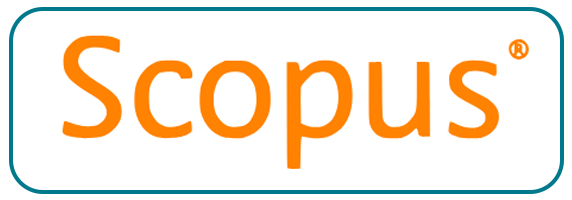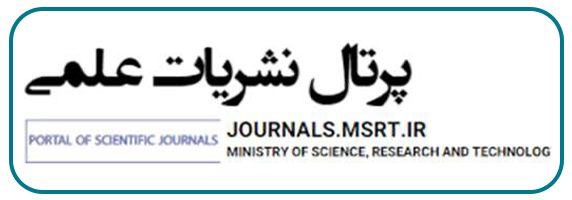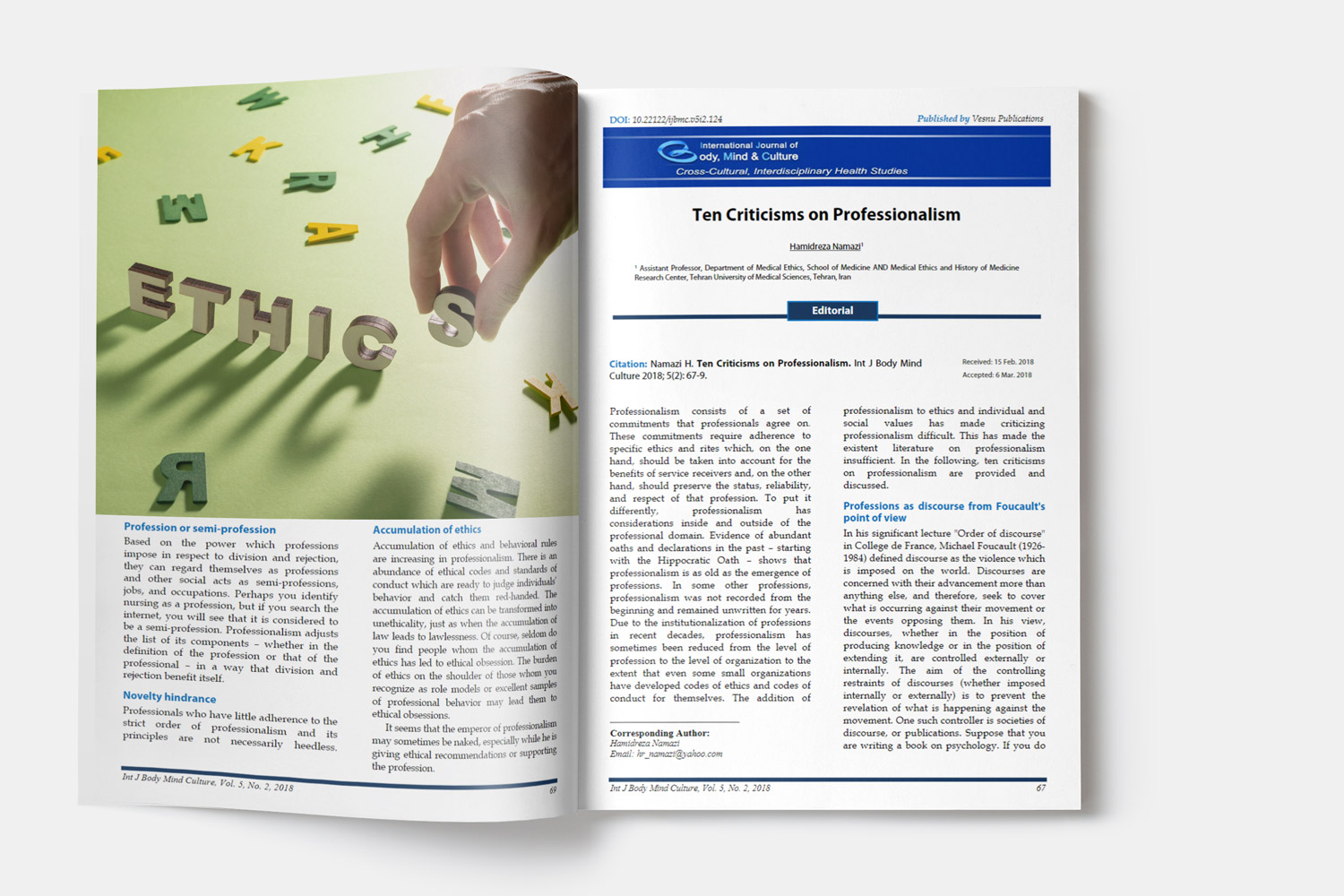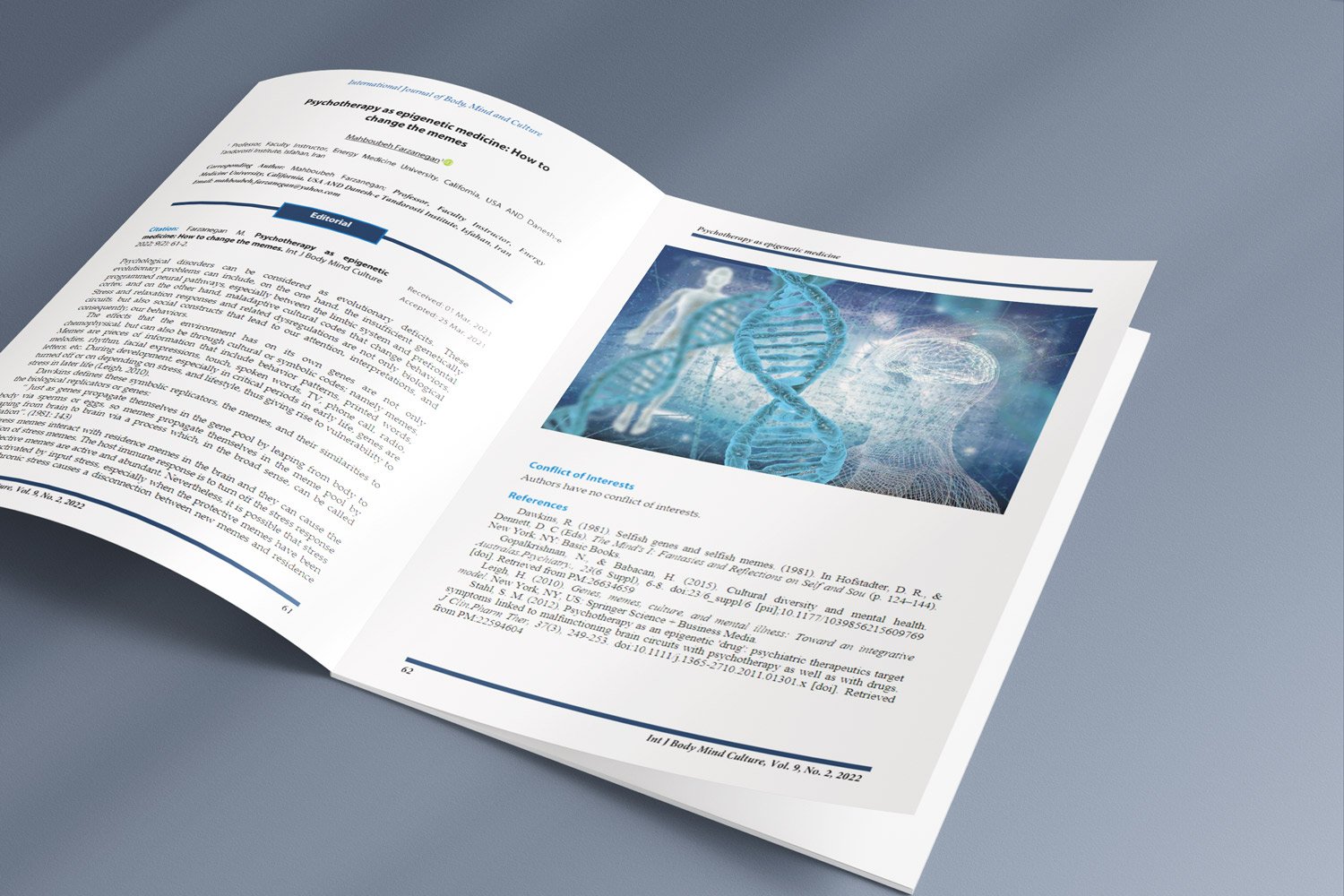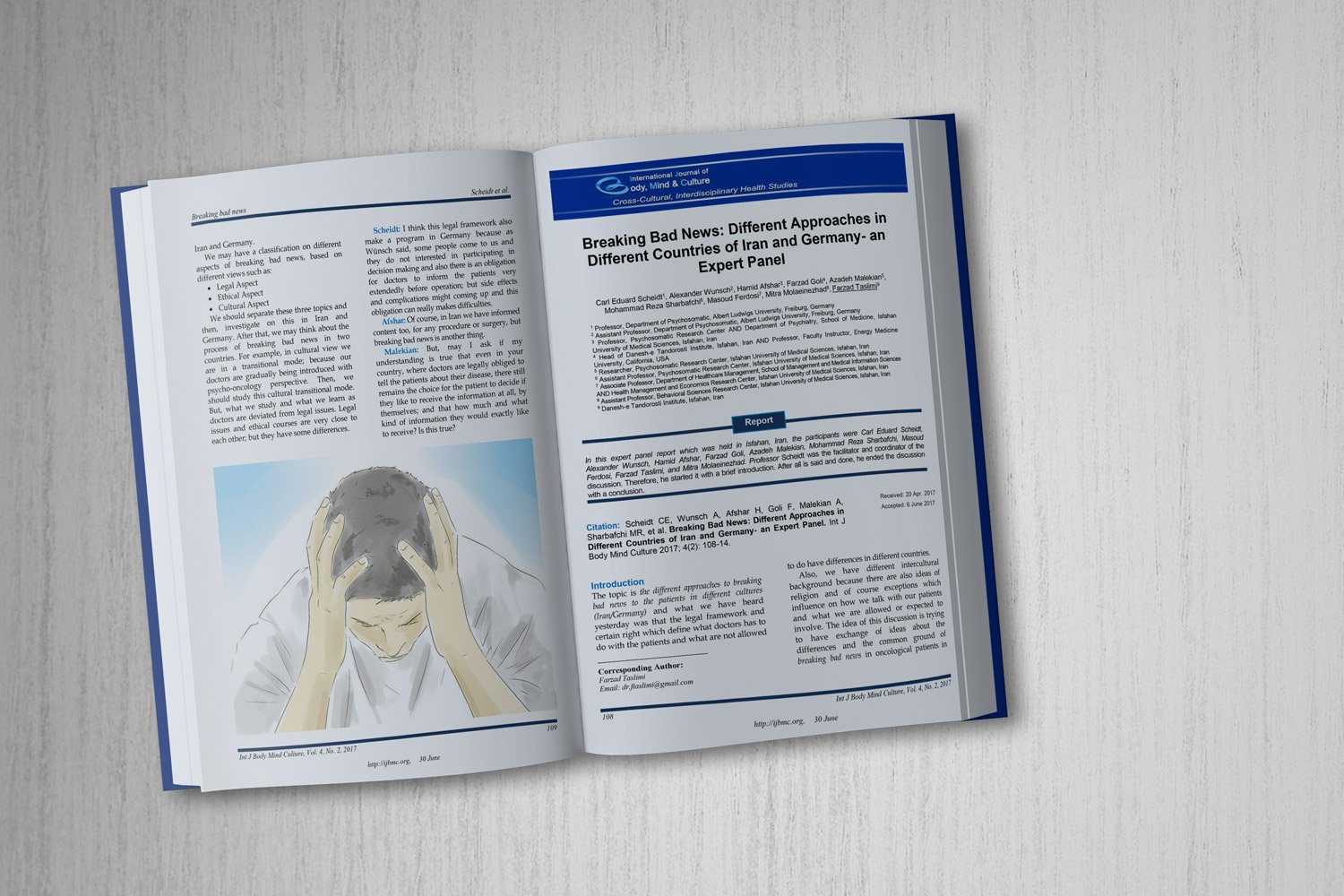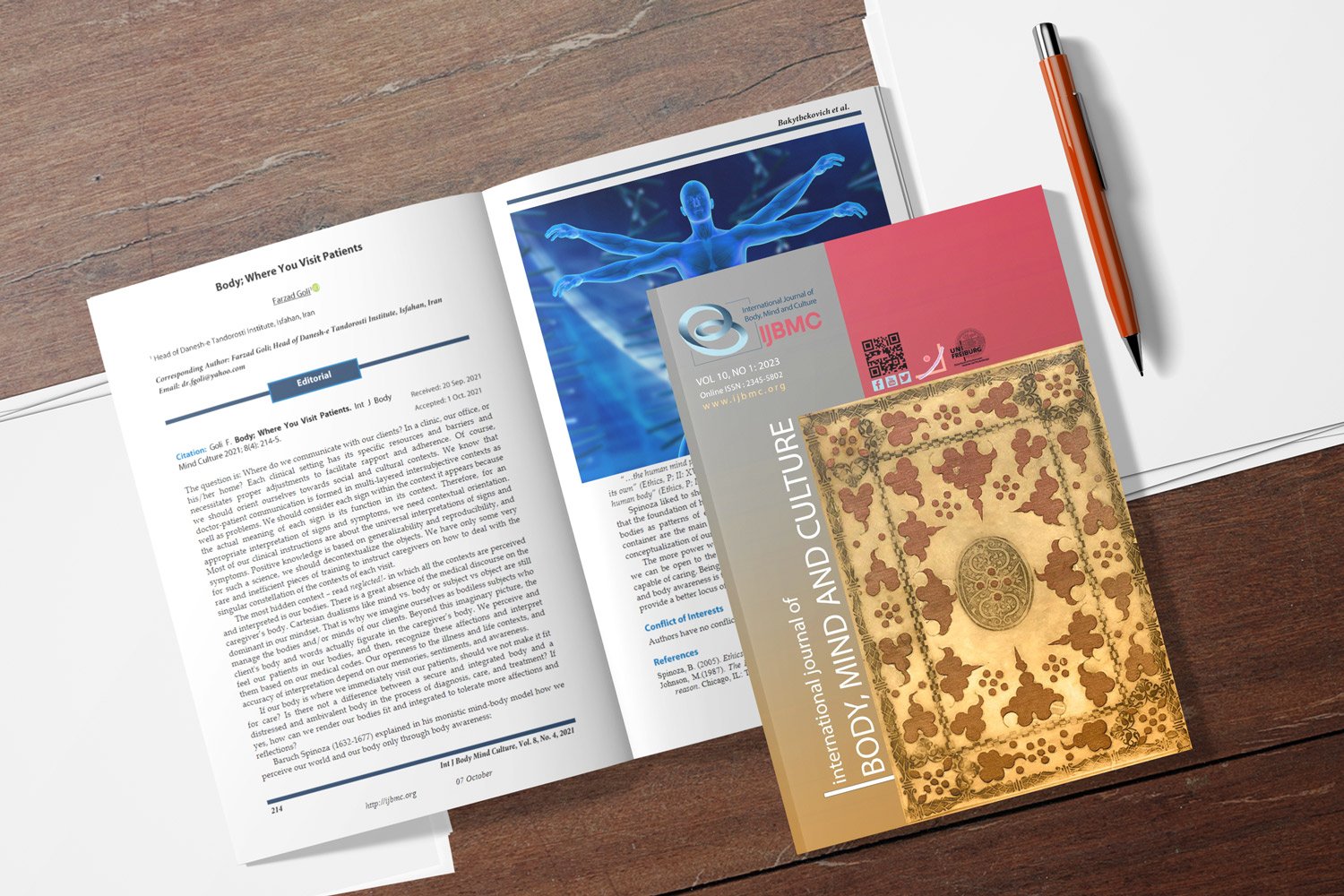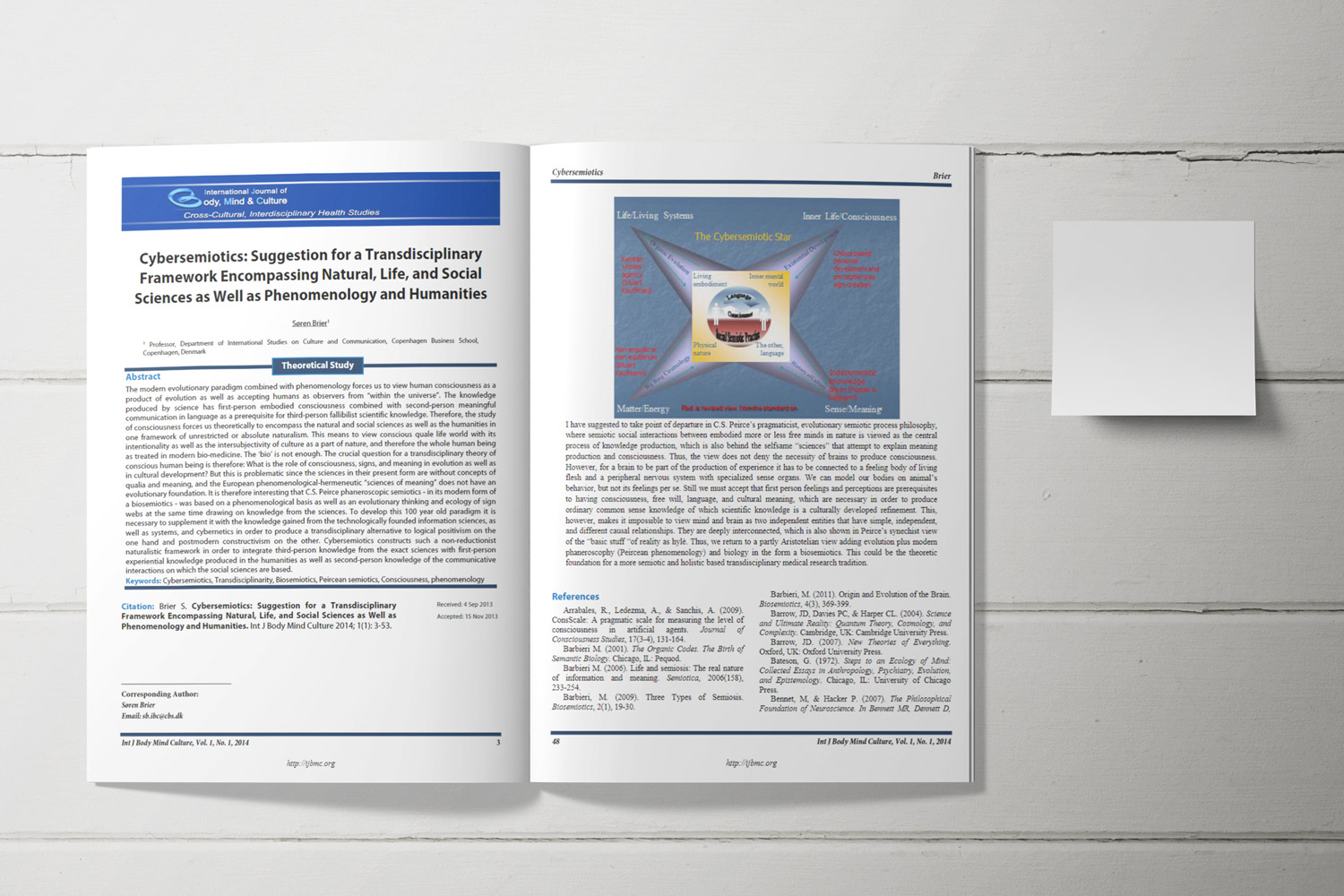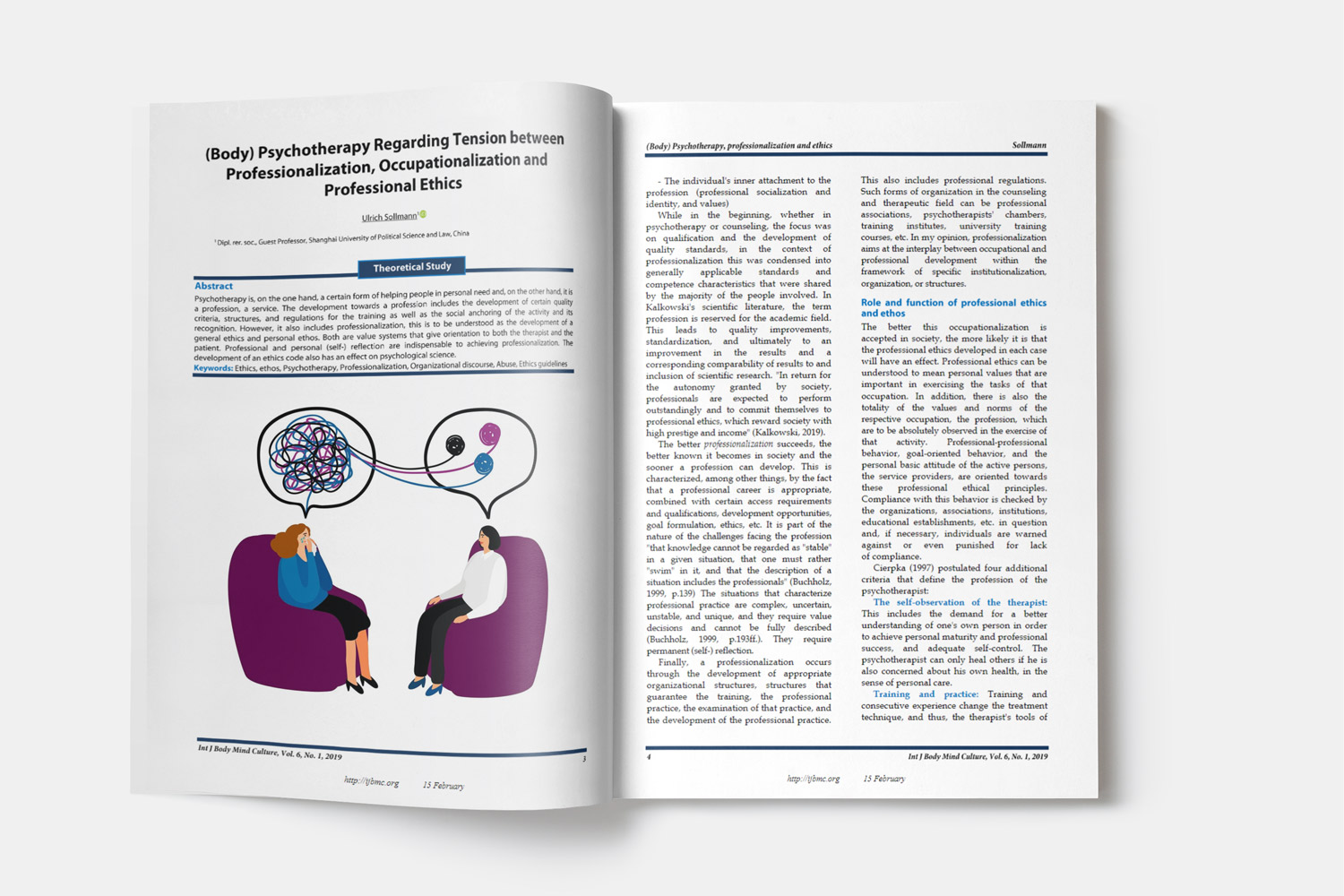Embracing Complexity: THE EMBEDDED WISDOM OF “AND”
Downloads
This perspective paper explores the transformative potentials of the conjunction "and" as a linguistic, metacognitive, and noetic tool for fostering integrity and synergy. The "yes, and" mode of thinking is rooted in improvisational theatre, and is used as the groundwork for fostering collaborative creativity, and is currently applied in organizational, educational, and healthcare settings. While contrastive conjunctions like "but" usually emphasize opposition and division, "and" reveal the coexistence of diverse emotions, perspectives, and attributions, promoting neutrality, inclusivity, and coherence in narratives. The essay aims to provide insights into the role of "and" in enhancing cognitive flexibility, emotional resilience, and relational Synergy, drawing from psycholinguistics, neurocognition, and spirituality. The pragmatics of speech within the Bioenergy Economy-based Health Improvement (BEHI) approach, with 'AndWork' as one of its techniques, are introduced as practical applications, demonstrating how 'and' can reconstruct self-narratives and develop multi-perspective awareness. This integrative approach underscores the importance of "and" in tolerating complexity and diversity, and promoting a nondual worldview.
Downloads
Blakemore, D., & Carston, R. (1999). The pragmatics of and-conjunctions: The non-narrative cases.
Brazal, A. (2019). Church as sacrament of yin-yang harmony: Toward a more incisive participation of laity and women in the church. Theological Studies, 80(2), 414-435. https://doi.org/10.1177/0040563919836444
Buber, M., Kaufmann, W., & Cullen, P. (1958). I and thou. (Publisher not specified). https://theanarchistlibrary.org/mirror/m/mb/martin-buber-i-and-thou.pdf
Bybee, J. L. (2013). Usage-based theory and exemplar representations of constructions. (Publisher not specified). https://doi.org/10.1093/oxfordhb/9780195396683.013.0004
Carlson, R. G., Wheeler, N. J., Liu, X., & Carroll, N. (2025). A latent profile analysis of relationship satisfaction and self‐regulation among low‐income participants who attended relationship education with a partner. Family Process, 64(1), e13051. https://doi.org/10.1111/famp.13051
Carston, R. (2002). Thoughts and utterances: The pragmatics of explicit communication. https://www.semanticscholar.org/paper/62bdfa3cf726638756471a5b024411e9d2ac252c
Chomsky, N. (2014). Aspects of the theory of syntax (Vol. 11). MIT Press. https://mitpress.mit.edu/9780262530071/aspects-of-the-theory-of-syntax/
Chow, H. M., Mar, R. A., Xu, Y., Liu, S., Wagage, S., & Braun, A. R. (2014). Embodied comprehension of stories: Interactions between language regions and modality-specific neural systems. Journal of Cognitive Neuroscience, 26(2), 279-295. https://doi.org/10.1162/jocn_a_00487
Cowley, S. (2014). The integration problem: Interlacing language, action, and perception. Cybernetics & Human Knowing, 21(1–2), 53-65. https://psycnet.apa.org/record/2014-36347-005
Darbor, K. E. (2016). Experiencing versus contemplating: Language use during descriptions of awe and wonder. Cognition and Emotion, 30(6), 1188-1196. https://doi.org/10.1080/02699931.2015.1042836
Davis, J. V. (2011). Ecopsychology, transpersonal psychology, and nonduality. International Journal of Transpersonal Studies, 30(1), 14. https://digitalcommons.ciis.edu/cgi/viewcontent.cgi?article=1125&context=ijts-transpersonalstudies
Dicataldo, R. (2023). Comprehension of explicit and implicit information in prereaders: The role of maternal education, receptive vocabulary, executive functions, and theory of mind. Discourse Processes, 60(2), 163-180. https://doi.org/10.1080/0163853x.2023.2185406
Drigas, A., & Karyotaki, M. (2018). Mindfulness training & assessment and intelligence. International Journal of Recent Contributions to Engineering, Science, and IT, 6(3), 70-85. https://doi.org/10.3991/ijes.v6i3.9248
Ellis, N. (2019). Essentials of a theory of language cognition. The Modern Language Journal. https://doi.org/10.1111/modl.12532
Emmanuella, N. (2024). Metaphorical language in couple’s therapy: A conceptual exploration of its impact on conflict resolution. World Journal of Advanced Research and Reviews. https://wjarr.com/content/metaphorical-language-couples-therapy-conceptual-exploration-its-impact-conflict-resolution
Fabri, K. M. C. (2005). Da diferenciação das conjunções adversativas em textos escritos. (Publisher not specified). https://seer.ufu.br/index.php/letraseletras/article/view/25189/14007
Friston, K. (2010). The free-energy principle: A unified brain theory? Nature Reviews Neuroscience, 11(2), 127-138. https://doi.org/10.1038/nrn2787
Gernsbacher, M. A. (1997). The structure building framework: Some theoretical considerations. The psychology of learning and motivation, 36, 307-349. https://www.researchgate.net/profile/Morton-Gernsbacher/publication/267509022_The_Structure_Building_Framework_What_it_is_what_it_might_also_be_and_why/links/5757264508ae5c6549042581/The-Structure-Building-Framework-What-it-is-what-it-might-also-be-and-why.pdf
Gernsbacher, M. A. (2013). Language comprehension as structure building. Psychology Press. https://doi.org/10.4324/9780203772157
Goli, F. (2018). Bioenergy economy: Fields and levels–A narrative review. International Journal of Body, Mind and Culture, 5(4), 171-182. https://ijbmc.org/index.php/ijbmc/article/view/130
Goli, F. (2022). Body, meaning, and time: Healing response as a transtemporal and multimodal meaning-making process. Epigenetics and anticipation, 79-97. https://doi.org/10.1007/978-3-031-17678-4_6
Goli, F. (2025). Pleasure, power, meaning, and beyond: Towards a biosemiotic model of wellbeing. International Journal of Body, Mind and Culture, 12(1), 7-23. https://doi.org/10.3384/ijbmc.1552-6127.120107
Gross, J. J., & Feldman Barrett, L. (2011). Emotion generation and emotion regulation: One or two depends on your point of view. Emotion Review, 3(1), 8-16. https://doi.org/10.1177/1754073910380974
Guang, T., & Trotter, D. (2012). Key issues in cross-cultural business communication: Anthropological approaches to international business. African journal of business management, 6(22), 6456. https://doi.org/10.5897/AJBM11.2673
Gunnerud, H. L., Ten Braak, D., Reikerås, E. K. L., Donolato, E., & Melby-Lervåg, M. (2020). Is bilingualism related to a cognitive advantage in children? A systematic review and meta-analysis. Psychological bulletin, 146(12), 1059. https://doi.org/10.1037/bul0000301
Habermas, J. (1984). The theory of communicative action. (Translator: T. McCarthy). https://teddykw2.wordpress.com/wp-content/uploads/2012/07/jurgen-habermas-theory-of-communicative-action-volume-1.pdf
Hagras, H., & Wagner, C. (2012). Towards the widespread use of type-2 fuzzy logic systems in real-world applications. IEEE Computational intelligence magazine, 7(3), 14-24. https://doi.org/10.1109/MCI.2012.2200621
Hardy, T. (1994). Multi-objective decision-making under uncertainty: Fuzzy logic methods. https://doi.org/10.2514/6.1995-1000
Hayes, S. C., Barnes-Holmes, D., & Roche, B. (2001). Relational frame theory: A post-Skinnerian account of human language and cognition. Kluwer Academic Publishers. https://doi.org/10.2514/6.1995-1000
Hayes, S. C., Strosahl, K. D., & Wilson, K. G. (1999). Acceptance and commitment therapy. (Publisher not specified). https://doi.org/10.1007/b108413
Hooker, J. (2012). Cultural differences in business communication. The handbook of intercultural discourse and communication, 389-407. https://doi.org/10.1002/9781118247273.ch19
Jonasson, C., & Lauring, J. (2012). Cultural differences in use: The power to essentialize communication styles. Journal of Communication Management, 16(4), 405-419. https://doi.org/10.1108/13632541211279030
Jones, M. G. (2022). Leveraging the epistemic emotion of awe as a pedagogical tool to teach science. International Journal of Science Education, 44(15), 2485-2504. https://doi.org/10.1080/09500693.2022.2133557
Kabat-Zinn, J. (2015). Mindfulness. Mindfulness, 6(6), 1481-1483. https://doi.org/10.1007/s12671-015-0456-x
Lakoff, G., & Johnson, M. (2008). Metaphors we live by. University of Chicago Press. https://www.textosenlinea.com.ar/libros/Lakoff%20y%20Johnson%20-%20Metaphors%20We%20Live%20By%20-%201980.pdf
Lewis, T., & Manusov, V. (2009). Listening to another’s distress in everyday relationships. Communication Quarterly, 57(3), 282-301. https://doi.org/10.1080/01463370903107279
Linehan, M. M. (1993). Skills training manual for treating borderline personality disorder. (Publisher not specified). https://dokumen.pub/skills-training-manual-for-treating-borderline-personality-disorder-0898620341-9780898620344.html
Margulies, H. (2023). Martin Buber and social justice. Religions, 14(11), 1342. https://doi.org/10.3390/rel14111342
McAdams, D. P. (2001). The psychology of life stories. Review of General Psychology, 5(2), 100-122. https://doi.org/10.1037//1089-2680.5.2.100
Menary, R. (2010). Introduction to the special issue on 4E cognition. Phenomenology and the Cognitive Sciences, 9(4), 459-463. https://doi.org/10.1007/s11097-010-9187-6
Messina, I. (2021). Neurobiological models of emotion regulation: A meta-analysis of neuroimaging studies of acceptance as an emotion regulation strategy. Social Cognitive and Affective Neuroscience, 16(3), 257-267. https://doi.org/10.1093/scan/nsab007
Ochsner, K. N., Silvers, J. A., & Buhle, J. T. (2012). Functional imaging studies of emotion regulation: A synthetic review and evolving model of the cognitive control of emotion. Annals of the New York Academy of Sciences, 1251(1), E1-E24. https://doi.org/10.1111/j.1749-6632.2012.06751.x
Renoult, L., Davidson, P. S., Palombo, D. J., Moscovitch, M., & Levine, B. (2012). Personal semantics: At the crossroads of semantic and episodic memory. Trends in Cognitive Sciences, 16(11), 550-558. https://doi.org/10.1016/j.tics.2012.09.003
Rompilla, D. B. (2021). Emotion regulation in the face of loss: How detachment, positive reappraisal, and acceptance shape experiences, physiology, and perceptions in late life. Emotion. https://doi.org/10.1037/emo0000932
Rompilla, D. B. (2023). Can emotional acceptance buffer the link between executive functioning and mental health in late life? Emotion. https://doi.org/10.1037/emo0001236
Rosenberg, M. B. (2003). Nonviolent communication: A language of life. (Publisher not specified). https://ccpgc.usmf.md/sites/default/files/inline-files/Nonviolent%20Communication_%20A%20Language%20of%20Life_%20Life-Changing%20Tools%20for%20Healthy%20Relationships%20%28%20PDFDrive%20%29.pdf
Sheikh, B. N. (2023). Aspects of shrine devotion and its entwined communication with the lived Sufi culture in Karachi. Journal of Journalism, Media Science & Creative Arts, 3(2). https://doi.org/10.56596/jjmsca.v3i2.79
Siegel, D. J. (2001). Memory: An overview, with emphasis on developmental…. https://pubmed.ncbi.nlm.nih.gov/11556645/
Song, H. (2021). Cognitive and neural state dynamics of narrative comprehension. The Journal of Neuroscience, 41(42), 8972-8990. https://doi.org/10.1523/JNEUROSCI.0037-21.2021
Sydnor, J. P. (2018). All is of God: Joy, suffering, and the interplay of contrasts. https://doi.org/10.1558/32682
Tankha, H., Caño, A., & Dillaway, H. (2020). “Now I have hope”: Rebuilding relationships affected by chronic pain. Families, Systems, & Health, 38(1), 51. https://doi.org/10.1037/fsh0000472
Varela, F. J., Thompson, E., & Rosch, E. (1991). The embodied mind: Cognitive science and human experience. MIT Press. https://doi.org/10.7551/mitpress/6730.001.0001
Wilber, K. (2007). Integral spirituality: A startling new role for religion in the modern and postmodern world. Shambhala Publications. https://www.amazon.com.be/-/en/Ken-Wilber/dp/1570625549
Winter, Y., & Rimon, M. (1994). Contrast and implication in natural language. Journal of Semantics, 11(4), 365-406. https://doi.org/10.1093/jos/11.4.365
Yang, D., Olesova, L., & Richardson, J. C. (2010). Impact of cultural differences on students’ participation, communication, and learning in an online environment. Journal of Educational Computing Research, 43(2), 165-182. https://doi.org/10.2190/EC.43.2.b
Zhang, J. R., & Kender, J. (2012). Arm gesture variations during presentations are correlated with conjunctions indicating contrast. https://doi.org/10.1145/2390895.2390900
Copyright (c) 2025 International Journal of Body, Mind and Culture

This work is licensed under a Creative Commons Attribution-NonCommercial 4.0 International License.

